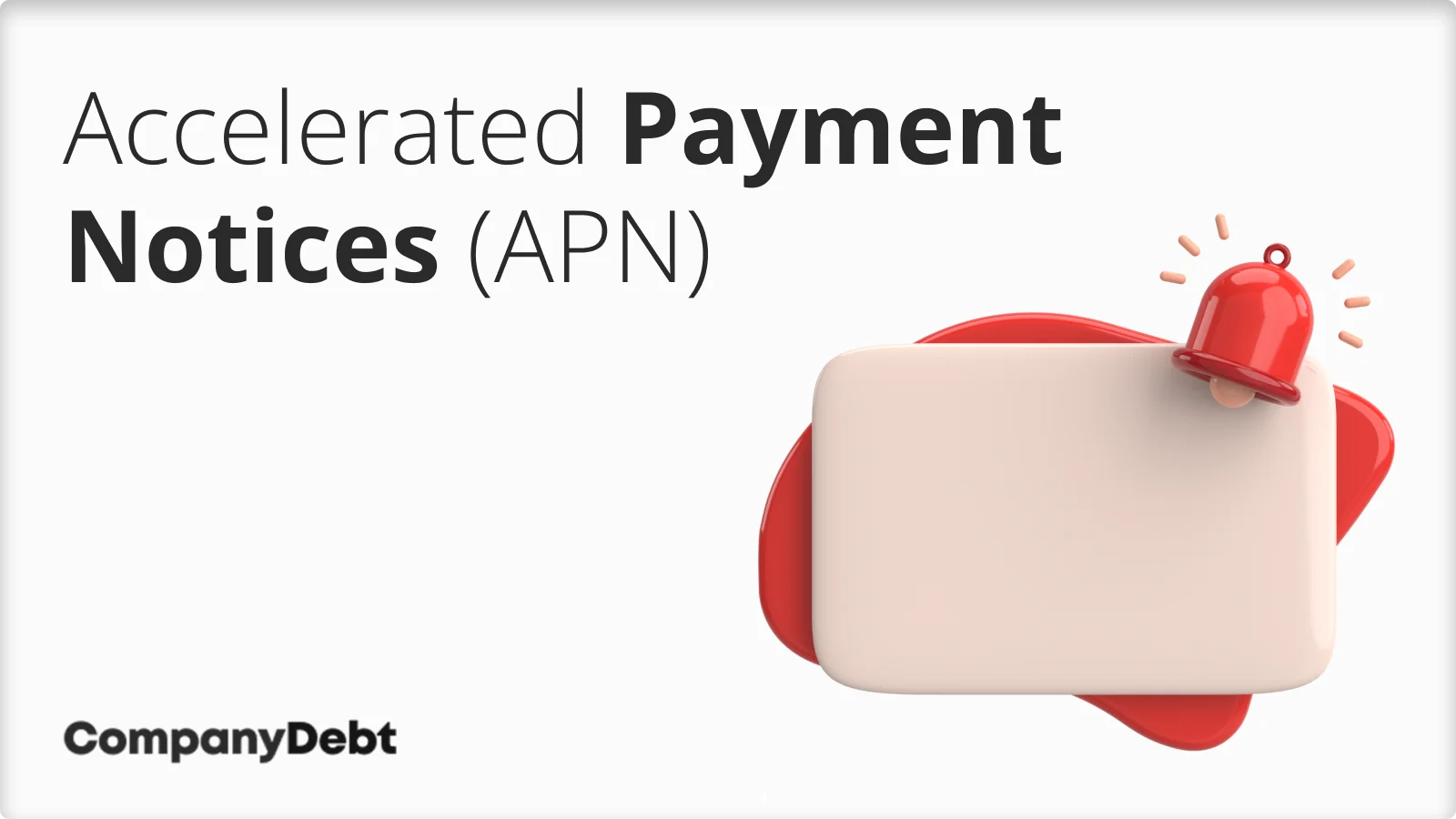
What Are the Consequences of an Accelerated Payment Notice (APN)?
Detailed guidelines on how to manage receiving an Accelerated Payment Notice from HMRC.
What is an Accelerated Payment Notices (APN)?
Accelerated Payment Notices are a method used by HM Revenue and Customs (HMRC) to collect taxes or National Insurance Contributions under dispute more rapidly.
APNs require taxpayers to pay upfront if they are using avoidance schemes disclosed under the Disclosure of Tax Avoidance Schemes (DOTAS) or are caught by the General Anti-Abuse Rule (GAAR).
The Finance Act 2014[1]Trusted Source – GOV.UK – Finance Act 2014 empowers HMRC to demand payment within 90 days without the taxpayer having the right to appeal the notice itself, only the underlying decision if there is an ongoing tax inquiry or tribunal case.

What are the Reasons You Might Receive an APN?
An APN is typically issued by HMRC following a taxpayer’s involvement in tax avoidance schemes listed on the Disclosure of Tax Avoidance Schemes (DOTAS)[2]Trusted Source – GOV.UK – DOTAS register, or breaches of the General Anti-Abuse Rule (GAAR)[3]Trusted Source – GOV.UK – Tax avoidance schemes — accelerated payments.
| DOTAS | GAAR |
|---|---|
| Introduced to identify tax avoidance schemes and those using them, requiring promoters and users to report to HMRC. | Targets abusive tax arrangements that fall outside the spirit of the law, providing a broader basis for challenging avoidance. |
What are Your Options if You’ve Received an APN?
If you’ve received an APN, here’s what you should do:
- Don’t panic, but act quickly. You have 90 days from the date of the notice to pay the amount demanded. These notices carry no appeal right, and it is impossible to negotiate with the Revenue on the sum stated in the notice.
- Check the deadline and put it in your calendar so you remember.
- Gather all the relevant documentation related to the tax avoidance scheme or the transaction.
- Seek professional advice from a tax expert immediately.
- If you agree with the APN, make arrangements to pay the amount due within the 90-day deadline.
- If you disagree with the APN, you can make representations to HMRC outlining why you think the notice is incorrect. You’ll need to provide evidence to support your case. However, keep in mind that these notices do not carry the right to appeal.
- If HMRC rejects your representations, you can appeal the decision to the Tax Tribunal. However, you’ll still need to pay the amount demanded by the APN deadline unless you agree with HMRC to postpone the payment.
The Consequences of Ignoring an APN
Ignoring an APN can lead to serious penalties. Once issued, you have 90 days to pay the requested amount; failure to comply can result in interest on unpaid amounts and additional penalties, which can accrue until the full amount is settled.
Continued non-compliance can lead to more severe consequences, such as HMRC using enforcement actions to recover debts. This could include seizing assets or pursuing court actions, which could have a lasting impact on a taxpayer’s financial and legal standing.
FAQs
Can an APN be adjusted if it’s based on incorrect information?
Yes, if an APN contains factual errors, you can contact HMRC to request an amendment. You will need to provide evidence supporting your claim that the information is incorrect. HMRC will review your submission and can adjust the notice accordingly if they find the evidence valid.
What evidence is needed to dispute an APN?
To dispute an APN, compile all relevant documentation related to your tax returns, communications with HMRC, and any evidence related to the tax avoidance scheme cited in the APN. This may include financial statements, emails, and documentation of your tax advisory’s recommendations. Legal advice is strongly recommended to ensure that your dispute is as robust as possible.
How long does HMRC take to respond to an APN dispute?
The response time for an APN dispute can vary, but HMRC typically aims to reply within 90 days of the representation. During busy periods or complex cases, this time frame may extend. Continuous follow-up with HMRC is advisable to monitor the status of your dispute.
Are there any circumstances under which an APN can be deferred?
Deferment of an APN is generally not allowed; however, if you are facing genuine financial hardship, HMRC may consider alternative arrangements such as a payment plan. It’s essential to communicate openly with HMRC about your financial situation and seek professional advice.
How can I ensure my tax avoidance scheme is not listed under DOTAS?
To ensure your tax arrangements are not considered tax avoidance schemes under DOTAS, consult with a qualified tax advisor to review any schemes or strategies you consider using. They can provide guidance on compliance with current tax laws and ensure that your tax planning strategies do not fall within DOTAS’ disclosure requirements.
The primary sources for this article are listed below, including the relevant laws and Acts which provide their legal basis.
You can learn more about our standards for producing accurate, unbiased content in our editorial policy here.
- Trusted Source – GOV.UK – Finance Act 2014
- Trusted Source – GOV.UK – DOTAS
- Trusted Source – GOV.UK – Tax avoidance schemes — accelerated payments








